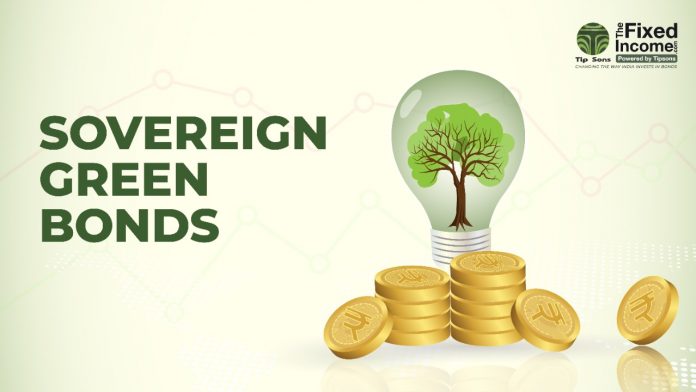Introduction
Several governments around the world have released sovereign green bonds in response to the growing demand for financing climate mitigation and adaptation activities. A sovereign green bond is a type of debt instrument that the federal government or a state government issues to raise money from investors with the promise that the money will be used for environmental or climate-related projects.
What was the need to issue sovereign green bonds in India?
- India generally uses domestic resources to fund its climate initiatives. Currently, the government is attempting to access global financial resources as well.
- The government has released a framework for sovereign green bonds to increase investor trust in India’s climate mitigation and adaptation efforts.
History of Sovereign Green Bonds
- This movement started when the Polish government issued its first sovereign green bond in 2016. As of September 2022, 38 central governments that have issued green bonds have established a green bond framework.
- According to the Bank for International Settlements, when a government issues Sovereign green bonds, especially the first one, it raises the bar for green issuance across the country. Other businesses have adopted the guidelines provided by the first sovereign green bonds.
Meaning of sovereign green bonds:
A green bond is a type of debt instrument used to raise money for “green” projects, which are often those including renewable energy, environmentally friendly transportation, sustainable water management, etc. Or in other words, the profits from these bonds will fund environmental initiatives.
This is different from regular bonds, which allow the issuer to use the proceeds for various things. Since the market’s launch in 2007, there have been cumulative asset purchases on the global green bond market totalling much more than USD 1 trillion.
Reason to issue a sovereign green bond
- According to the Finance Minister, the government declared that it would issue sovereign green bonds to raise money for green infrastructure in the Budget 2022. The funds raised will be used for government initiatives that lower the economy’s carbon footprint. The declaration coincides with India’s pledge to achieve net-zero carbon emissions by 2070.
- Our finance minister, Smt, Nirmala Sitharaman has approved the last structure for India’s sovereign green bonds. This approval will further strengthen the Paris Agreement’s Nationally Determined Contribution (NDC) targets, which will also aid in luring foreign and domestic capital to qualifying green projects. The revenues generated by these bonds will be further used in the public sector.
When will the first sovereign green bond be issued in India?
- The Finance Minister stated in her Budget statement at the beginning of the year (2022) that sovereign green bonds will be issued to raise funds for green projects.
- The money will be used for government initiatives to lower the economy’s carbon footprint.
- In light of this, the government and RBI have decided to issue sovereign green bonds during October and March of FY23. The green bond issue size will be Rs 160 billion ($2 billion) or close to 1% of the overall borrowing for FY23.
The framework of sovereign green bonds
- According to the framework, green projects will include renewable energy, sustainable development, clean transportation, and sustainable management of resources. These projects will also include projects like:
- The Marine projects
Under the heading of “terrestrial and aquatic biodiversity conservation,” projects about coastal and marine environments and biodiversity preservation, such as preserving endangered species, habitats, and ecosystems, are listed.
2. The Land projects
These funds could be used for projects like soil remediation, greenhouse gas reduction, waste management, waste prevention, waste recycling, and waste reduction.
3. Nuclear investment is also taken into consideration.
4. Sovereign green bond funds will not fund greater than 25 MW hydropower plants and landfill projects.
- According to the official document, the second opinion provider (SOP) for green bond frameworks in Oslo, CICERO, reviewed India’s green bond framework and gave it the thumbs up for compliance with the ICMA Green Bond Principles. The international community uses the ICMA guidelines to assess green bond requirements without any regulatory framework.
Benefits
- Sovereign green issuance sends a clear message to governments and authorities about their intentions toward climate change and sustainable development.
- Sovereign green bonds will spur the local market’s growth and provide institutional investors with a boost.
- It will facilitate the expansion of a local market by offering benchmark pricing, liquidity, and a demonstration effect for local issuers.
The future of sovereign green bonds in India
- To avoid greenwashing and for tax purposes, it is also crucial to have a common global definition of what constitutes a “green” investment.
- Because green bonds are a fairly recent development, it is crucial to educate people about their benefits, processes, and related details.
- The institutional hurdles to entering into this sector could be addressed with the help of raising awareness.
Foreign investors also place a high value on green bonds issued by developing nations like India due to their alluring values and potential growth prospects. Thus, Green Bonds have the potential to significantly contribute to the development of both the Indian and global economies with the proper rules and screening procedures in place.



















